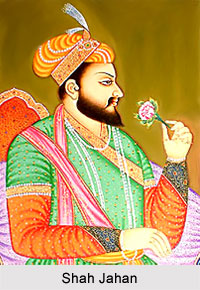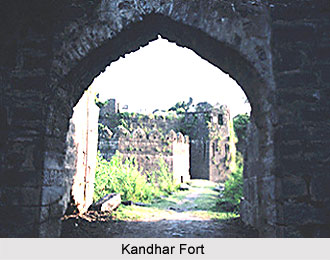 Revolt of Shah Jahan resulted largely because of the towering political ambition of Nur Jahan and her conspiracy to prevent Shah Jahan from becoming the Emperor after Jahangir. The marriage of Ladli Begum, with prince Shahryar, in 1621 AD., changed the attitude of Nur Jahan towards Shah Jahan. He was regarded the crown-prince of the empire, and was a member of the Nur Jahan Junta. But Nur Jahan desired that in place of Shah Jahan, the next emperor should be her own son-in-law, Shahryar who could be a puppet in her hands. Therefore, she planned to reduce the power and prestige of Shah Jahan. Her mother and father being dead by 1622 A.D., there remained nobody to put a check to her towering ambition to keep the power of the state in her hands even after the death of her husband. Shah Jahan also grew suspicious towards her and the conflict between the two became inevitable.
Revolt of Shah Jahan resulted largely because of the towering political ambition of Nur Jahan and her conspiracy to prevent Shah Jahan from becoming the Emperor after Jahangir. The marriage of Ladli Begum, with prince Shahryar, in 1621 AD., changed the attitude of Nur Jahan towards Shah Jahan. He was regarded the crown-prince of the empire, and was a member of the Nur Jahan Junta. But Nur Jahan desired that in place of Shah Jahan, the next emperor should be her own son-in-law, Shahryar who could be a puppet in her hands. Therefore, she planned to reduce the power and prestige of Shah Jahan. Her mother and father being dead by 1622 A.D., there remained nobody to put a check to her towering ambition to keep the power of the state in her hands even after the death of her husband. Shah Jahan also grew suspicious towards her and the conflict between the two became inevitable.
The fort of Kandhar was besieged by Persia in early 1622 A.D. Jahangir ordered Shah Jahan to march for its rescue. Shah Jahan agreed to march towards Kandhar after the rainy reason and demanded entire Punjab and the fort of Rohtasgarh in return. Nur Jahan got a chance to poison the ears of the emperor because of the demands of the prince. Shah Jahan was in the Deccan at that time and the enraged emperor asked him to dispatch the troops and the officers under his command immediately to the court. Another incident occurred at this very time which drove further wedge between the two parties. Shah Jahan had asked the jagir of Dholpur from the emperor and, believing that his request would be granted he dispatched his troops to occupy it in advance. But Nur Jahan had already got this jagir transferred in the name of Shahryar from the emperor. When the troops of Shah Jahan reached Dholpur they quarreled with the Faujdar who was deputed there by Shahryar.  This enraged Emperor Jahangir and therefore, ordered Shah Jahan to send all his troops to the court.
This enraged Emperor Jahangir and therefore, ordered Shah Jahan to send all his troops to the court.
Jahangir assigned his jagir in to Shahryar. Nur Jahan grew suspicious of the intentions of Shah Jahan and therefore, called Mahabat Khan from Kabul to the court and deputed Asaf Khan to safeguard the royal treasury. Shah Jahan proceeded forward from Mandu and made a surprise attack on Agra. He was, however, defeated by the imperialists near Agra early in April 1623 A.D. He returned to Mandu. Mahabat Khan pursued him. Shah Jahan lost entire Gujarat to the imperialists. He then went to Burhanpur and sought help from Ahmednagar and Bijapur which was, however, refused. Mahabat Khan captured Burhanpur which was left unprotected by Shah Jahan. Shah Jahan marched to Orissa and it fell easily in his hands. He captured Bengal as well. He then, proceeded to Bihar and occupied Bihar including the Rohtasgarh fort, Jaunpur and Patna. He next besieged the fort of Allahabad. Mahabat Khan followed him to the north and forced him to fight a battle near Allahabad. Shah Jahan was defeated and agreed to retreat. He returned to Ahmednagar via Bihar, Bengal and Bijapur. Mahabat Khan followed him to the Deccan. But this time Shah Jahan received help from Malik Ambar and besieged the fort of Burhanpur but had to withdraw due to timely arrival of Mahabat Khan for the rescue of the fort. Shah Jahan retreated to Balaghat and took shelter in the fort of Rohangarh. Shah Jahan begged mercy of the emperor which was granted to him. Jahangir gave him the governorship of Balaghat as well. In return, however, Shah Jahan surrendered the forts of Rohtasgarh and Asirgarh to the imperialists and sent his sons Dara Shikoh and Aurangzeb to the court as hostages for his good conduct in future.
Thus, the revolt of Shah Jahan failed. But, it troubled the empire for nearly three years.



















